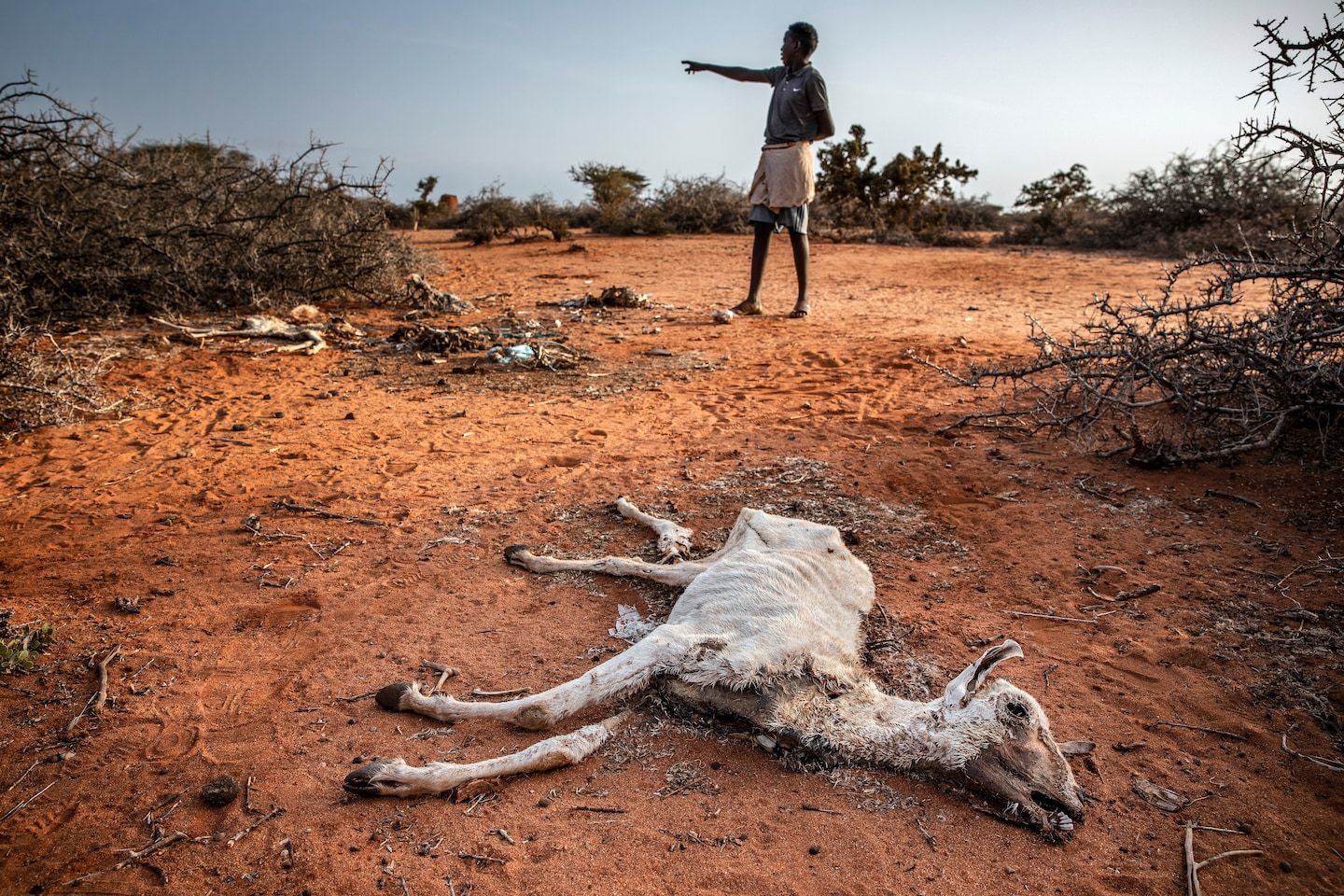Climate change caused catastrophic East Africa drought, scientists say
Listen 5 min Comment on this story Comment Gift Article Share
East Africa’s worst drought in at least 40 years, which has displaced more than a million people and pushed millions more to the brink of famine, would not have happened if not for human-caused climate change, a network of extreme weather scientists said Thursday. Want to know how your actions can help make a difference for our planet? Sign up for the Climate Coach newsletter, in your inbox every Tuesday and Thursday. ArrowRight Rising global temperatures — largely from burning fossil fuels — have disrupted the weather patterns that typically bring rainfall to Ethiopia, Kenya and Somalia, the scientists found. Last fall, the once-dependable rains failed for a record-setting fifth season in a row. Hotter conditions have also caused more moisture to evaporate from the landscape, desiccating croplands and causing millions of livestock to starve.
With global temperatures about 1.2 degrees Celsius (2.2 degrees Fahrenheit) higher than the preindustrial average, the scientists say, droughts like this one are 100 times more likely than they would have been in a cooler world.
Advertisement
Co-author Friederike Otto said that result underscores the devastating effects of climate change in developing countries, which did little to contribute the problem and have far fewer resources to cope. She hoped the study would help galvanize financial support for the world’s most vulnerable nations as they face irreversible climate harms.
“The focus needs to be on reducing vulnerability,” said Otto, a climate scientist at Imperial College London. “One drought shouldn’t mean years and years of hunger.”
The new study from the World Weather Attribution initiative — a coalition of scientists who analyze the role of climate change in extreme weather events — has not yet been published in a peer-reviewed journal. But it uses proven analytical methods to identify the fingerprints of human-caused warming.
Advertisement
“It’s important to know how climate change alters the risk and intensity of such an event because you can begin to prepare,” said Andy Hoell, a research meteorologist at the National Oceanic and Atmospheric Administration Physical Sciences Laboratory, who was not involved with the new research. “It lets us know if what we see now is something that is a harbinger of things to come.”
The Horn of Africa typically experiences two rainy seasons — the “long rains” from March to May and the “short rains” in October and November. From the autumn of 2020 to the end of 2022, each of these seasons has been far below average, with several river basins seeing their lowest rainfall totals since 1981.
Climate change has been particularly problematic for the long rains, Otto said. These are generated by the Intertropical Convergence Zone, a band of clouds that encircles the Earth around the equator. In springtime, the ITCZ usually follows the sun northward, providing Ethiopia, Kenya and Somalia with much-needed seasonal rains.
Advertisement
Yet the once-dependable rain belt starts fluctuating as temperatures rise. A recent report from the United Nations Intergovernmental Panel on Climate Change found that the ITCZ is likely getting narrower and more intense — leading to floods in West Africa and drought in the East. The researchers estimate that human-caused warming has roughly doubled the chance of a weak long rain season.
But even more problematic than the weakened rains is the way the landscape dried out amid higher temperatures. For every degree Celsius of warming, scientists have found, the atmosphere can hold about 7 percent more moisture. This warmer, thirstier atmosphere literally sucked water out of the region’s plants and soils, pushing large swaths of the region into what the U.S. National Weather Service would consider “exceptional drought,” the researchers said.
In a region where most people are employed in agriculture and few communities have irrigation systems or long-term water storage, the consequences have been profound. Farmers whose crops fail often couldn’t afford to purchase new seed for the next season’s planting. Most herders have no access to insurance; when their cattle died, they were forced to abandon the livelihood that may have sustained their families for generations.
Advertisement
A litany of other issues compounded the crisis: local conflict, high food prices triggered by the war in Ukraine, global economic fallout from the covid-19 pandemic.
By the end of 2022, the World Food Program said that roughly 23 million people in Ethiopia, Kenya and Somalia were “severely food insecure” — meaning they had run out of food and gone a day or more without eating. Nearly a million children suffered from acute malnutrition. Another million people were forced to leave their homes in search of food, water and work.
Rain finally returned to the Horn of Africa this spring. But instead of quenching the parched landscape, the storms drowned farm fields and deluged pastures. Floodwaters overtopped riverbanks and washed away topsoil.
The Famine Early Warning Systems Network warned that even these unusually intense rains were nowhere near enough to help the region recover from the historic drought.
With global greenhouse gas emissions still increasing, and average temperatures getting hotter every year, the weather in the Horn of Africa is expected to become even more erratic, Otto said.
“They will have very dry years followed probably by heavy floods,” she said. “There will be a lot more extreme events people have to be able to deal with.”
GiftOutline Gift Article
Source: The Washington Post


